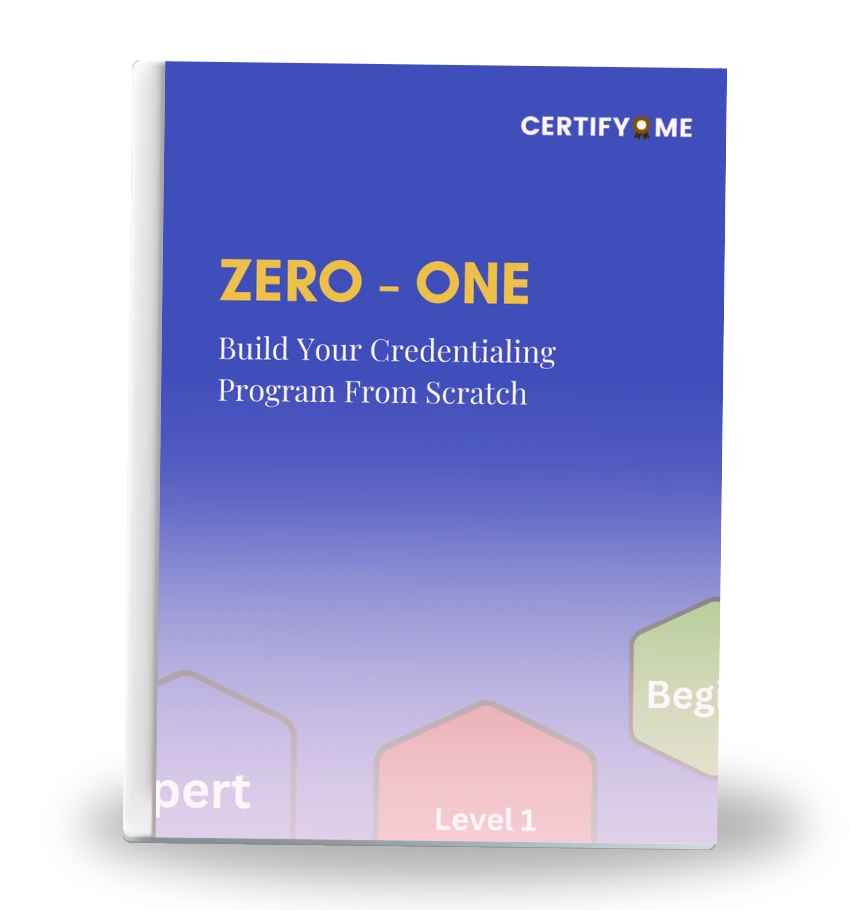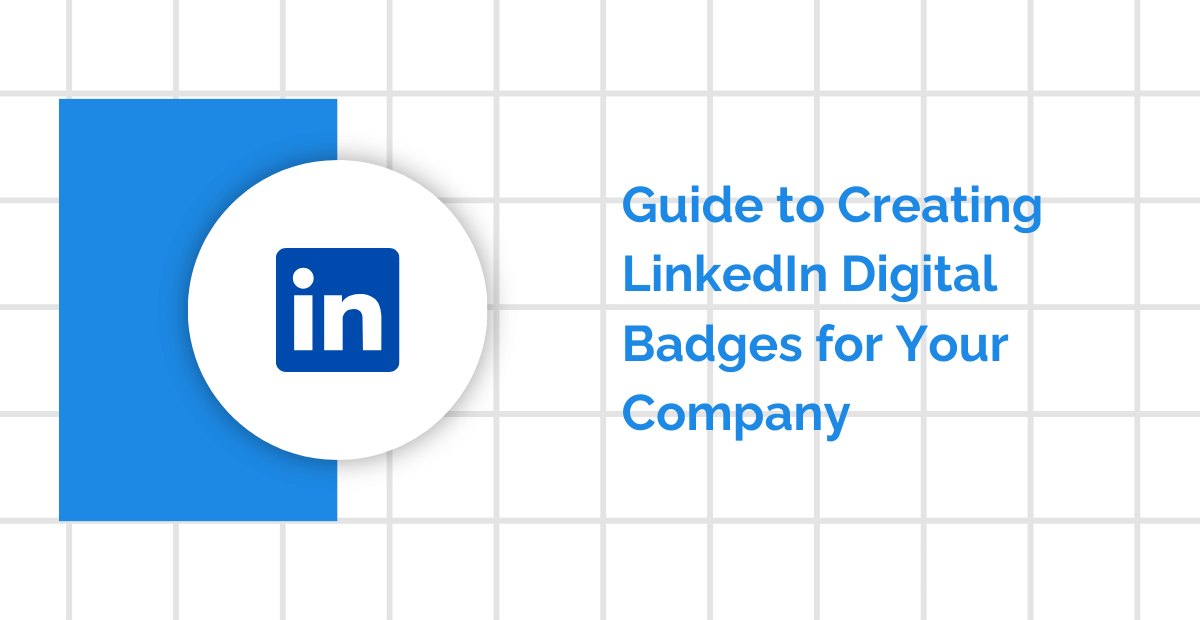Ever wish there was an easier way to prove you were part of something meaningful—like a big event or campus conference?
Whether you were organizing, speaking, volunteering, or just showing up and soaking in knowledge, those moments deserve to be remembered—and more importantly, recognized. Digital credentials are like modern-day thank-you notes, but smarter—easy to share, hard to fake, and built to last.
In this blog, we’ll walk through what digital credentials really are, how they’re being used in events and meetings, and why they might just be the recognition tool you didn’t know you needed.
What Are Digital Credentials, Really?
Let’s not overcomplicate it. Digital credentials are basically the digital version of a certificate or badge. But unlike paper, they live online—and come with a whole set of perks.
Think of it this way:
-
Your paper certificate is like a photo on your fridge—nice to look at, but it just kind of… stays there.
-
A digital credential? That’s like a verified checkmark next to your name on the internet. It’s portable, secure, and way easier to share.
Here’s what they usually include:
-
Your name
-
What you did (like attending, volunteering, or speaking)
-
Who issued it (say, your university, a conference, or an event host)
-
A unique link so anyone can verify it’s real
They come in many forms:
-
Digital badges for volunteers
-
Certificates for attendees
-
Recognition tokens for panelists and speakers

It’s not just a trend. It’s a smarter, more efficient way to give credit where it’s due.
Want a visual explainer? Watch this quick video on digital credentials and open badges to see how they work and why they’re trusted.
Why Should Event and Meeting Professionals Care?
You might be thinking,
“Okay, cool concept—but do I really need this?”
Let’s talk through it.
Imagine organizing a university leadership summit, an alumni reunion, or a speaker panel. There’s effort, planning, follow-ups, and chaos management.
Now add one more layer: issuing attendance certificates, volunteer records, or speaker acknowledgments. Paper-based systems just don’t cut it anymore.
Here’s why digital credentials are a better fit:
-
Easy to Share (and Hard to Fake)
Everyone loves a little spotlight. Whether it’s a student sharing their first conference badge or a keynote speaker updating their portfolio—digital credentials make sharing simple.
-
Attendees can drop credentials onto LinkedIn in seconds.
-
Speakers can embed them on personal websites.
-
Recruiters can click a link to verify it’s legit.
No one’s emailing to double-check. No one’s second-guessing if that fancy certificate was edited on Canva.
And forgery? Practically impossible.
Each credential has its own verified URL, making it super easy to confirm who earned it and where it came from.
-
-
Saves Time (and Your Sanity)
Let’s be real: printing 300 certificates isn’t fun. Neither is chasing down spelling errors, fixing typos, or sealing envelopes at midnight.
With digital credentials, the process goes something like this:
-
Upload your attendee or volunteer list
-
Choose a credential template
-
Click issue
That’s it.
No printers. No mailing costs. No manual data entry.
More time for what matters—planning a better event.
-
-
Looks Good on You, Too
Your event isn’t just an event. It’s a brand.
Whether you’re representing a university department, a student-led club, or an industry group—how your event lives on matters.
Digital credentials carry your logo, your color palette, and your event name wherever they go. They’re mini billboards, reminding people:
-
Hey, you ran something worth showing off.
-
Your audience valued the experience enough to share it.
-
And it wasn’t just another checkbox—it was meaningful.
For event organizers and universities, it’s also worth exploring how digital credentials can enhance your marketing strategy by reinforcing your brand through every share.
-
-
Helps Participants Build Real-World Portfolios
Especially in university settings, students are constantly hunting for experiences that set them apart. But saying “I volunteered at a conference” is different from showing a verified badge that proves it.
Digital credentials are proof in pixels—evidence that backs up soft skills and experience.
-
Teamwork?
-
Public speaking?
-
Event planning?
-
Professional development?
These credentials not only validate soft skills—they also contribute to equity in hiring. Read more on how verified credentials support unbiased hiring and recognition.
How Universities Are Already Using Them
Let’s zoom in on campus life for a second. Universities have jumped on the digital credentials train—and for good reason.
Here’s what’s happening:
Student Clubs and Organizations
A student-run debate society organizes a city-wide competition. Each participant gets a shareable digital badge that:
-
Lists the role (debater, judge, volunteer)
-
Shows the event date and issuer
-
Links directly to a verification page
Instead of collecting dust, these credentials get posted, clicked, and remembered.
Registrar’s Office and Academic Events
Workshops, seminars, and development programs often go unnoticed—until they’re credentialed.
-
Academic skills workshops? Credentialed.
-
Diversity and inclusion training? Credentialed.
-
Career prep sessions? You guessed it—credentialed.
Now there’s a way to track participation and incentivize engagement.
Student Volunteers and Interns
From library assistants to event marshals—students put in time outside the classroom. Why not give them something more than just a thank-you note?
A digital badge can:
-
Help them prove experience
-
Support future internship or job applications
-
Reflect soft skills and dedication
It’s recognition that sticks.

What Do Digital Credentials Look Like?
If you’re picturing a boring PDF, think again.
Digital credentials are visual, dynamic, and personalized.
A typical credential includes:
-
Your full name
-
A description of the achievement or activity
-
The issuing organization (with its logo and signature)
-
Date of issuance
-
A scannable QR code or clickable link
They can also include metadata—basically hidden data that explains more:
-
Learning outcomes
-
Hours completed
-
Skill tags like “leadership,” “event management,” or “teamwork”
And here’s where it gets fun—
Recipients can post them:
-
On LinkedIn
-
In their email signatures
-
On digital portfolios
-
Even inside job applications
These aren’t static awards—they’re alive in the digital world.
Organizations and associations are also adopting them—see how associations use digital credentials for member recognition to boost engagement and loyalty.
Okay, But Are They Secure?
Let’s address the elephant in the room.
“How do I know this thing is real?”
Short answer: technology.
Digital credentials are powered by secure systems that can’t be tampered with. Some platforms (like CertifyMe) even use blockchain—which, without getting too technical, means:
-
Each credential has a digital fingerprint
-
It’s impossible to alter or fake
-
Anyone can verify it, anytime, from anywhere
No more hunting down certificate copies. No more “I swear I attended that event” without proof.
It’s secure, smart, and student-friendly.
Digital credentials issued by platforms like CertifyMe often follow the Open Badges standard by Mozilla, ensuring global interoperability and verification.
Final Thoughts: It’s Not Just a Trend
Let’s be honest—“digital” can sometimes sound like a gimmick. But in this case, it’s the opposite.
Digital credentials aren’t trying to replace traditional certificates just for the sake of it. They’re responding to a real need—for easier validation, faster sharing, and more meaningful recognition.
As someone organizing, hosting, or even attending an event, you know that what happens during the event matters.
But so does what happens afterward.
A digital credential becomes a memory, a record, and a message all in one:
-
You were there.
-
You made an impact.
-
And now you have proof.
Whether you’re managing conferences, leading student clubs, or part of a registrar’s team—it’s worth exploring.
Not because it’s trendy. But because it’s useful, thoughtful, and lasting.
Why Event Pros Should Use Digital Credentials:
Here’s your cheat sheet for when someone asks “Why go digital?”
-
They’re easier to issue (say goodbye to printing stress)
-
They’re simple to share (LinkedIn, email, anywhere)
-
They boost your event brand (your name travels with the credential)
-
They help participants grow (real proof of real effort)
-
They’re trusted and secure (no more second-guessing)

A Final Nudge: Try It Once
Still unsure? Try issuing digital credentials at your next event.
-
Start with a small workshop.
-
Offer badges to volunteers.
-
See how your audience responds.
Chances are, you’ll see a flurry of LinkedIn shares, resume updates, and people genuinely proud of their participation.
And you? You’ll have saved time, reduced paper clutter, and added a modern touch to your event planning.
Not bad for a few clicks.
How CertifyMe Helps Event Professionals Issue Verified Digital Credentials
If you’re convinced that digital credentials can transform how you recognize and engage participants, the next question is—where do you start? That’s where CertifyMe comes in.
CertifyMe is a leading digital credentialing platform built for modern organizations, universities, and event professionals. It allows you to issue secure, verifiable, and beautifully designed digital badges and certificates with just a few clicks. Whether you’re managing a student conference, a professional development workshop, or a large-scale industry event, CertifyMe makes credentialing simple, efficient, and impactful.
Issue Credentials in Minutes
With CertifyMe, you can upload participant data (from CSV files or spreadsheets), customize your badge or certificate design using built-in templates, and issue credentials in bulk. No printing. No envelopes. No delays. Your attendees receive their credentials instantly, with embedded verification links and shareable badges they can proudly post to LinkedIn, email signatures, or personal portfolios.
Security & Verification Built In
CertifyMe uses blockchain-backed verification to prevent tampering or forgery. Each credential comes with a unique, traceable URL that anyone—from recruiters to educators—can use to verify the authenticity of an award. This is a game-changer for event organizers who want their programs to be recognized beyond the event itself.
Custom Branding That Promotes Your Event
Your event is part of your brand, and CertifyMe helps it live on. You can fully customize the look and feel of your credentials—adding your logo, event name, brand colors, and more. Every time a recipient shares their credential online, your event gets organic visibility, acting as a mini digital billboard for your organization.
Track Credential Engagement
Want to know how your issued credentials are performing? CertifyMe gives you access to analytics dashboards that track opens, shares, and verifications. This means you not only see how your audience is interacting with their credentials, but also gain insights into the value and reach of your event.
Ideal for All Event Types
Whether you’re credentialing volunteers, workshop attendees, speakers, or student organizers, CertifyMe has flexible options that suit your event’s structure. It’s especially useful in academic and professional settings where participants expect recognition that’s portable, verifiable, and credible.
Want Help Getting Started?
Well, digital credentials aren’t just a “nice touch” anymore—they’re becoming part of how we build trust in professional and academic spaces. Whether you’re planning events, managing student records, or attending workshops, these credentials help make your involvement visible. And not just to yourself, but to others who might one day want to know what you’ve done.
They give students a chance to build their portfolios, help event organizers boost credibility, and make it easier for admin staff to keep track of who did what. They’re not flashy, but they’re effective. And honestly, anything that cuts down paperwork and boosts recognition? That’s worth looking into.
From events to enterprise training programs, the need for verified proof of achievement is growing. Learn more about business use cases for digital credentials across industries.
If you’re curious about using digital credentials in your events or academic programs, CertifyMe makes it simple to get started. Their platform is easy to use, fully verifiable, and designed with both students and professionals in mind. It’s a solid way to keep things organized while giving people something meaningful to walk away with.
Want to see it in action? Book a demo with CertifyMe and explore how it could fit into your next event or program.

 Author :
Author : 




